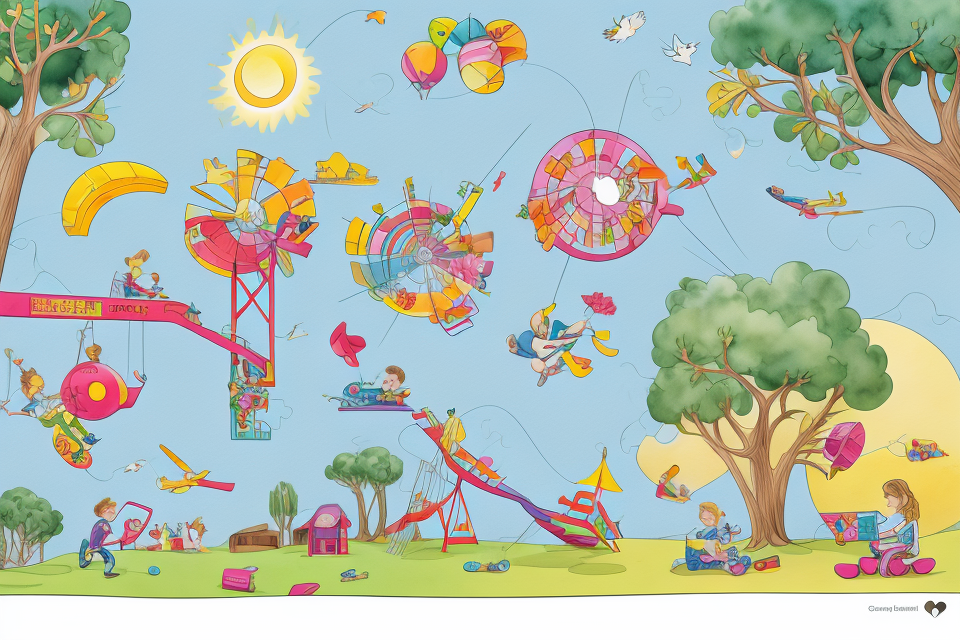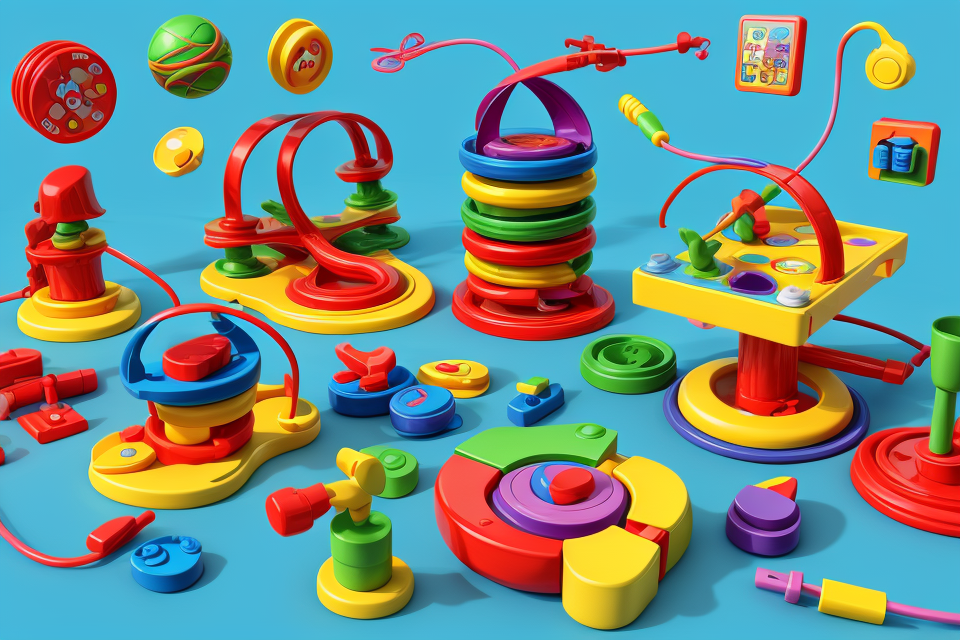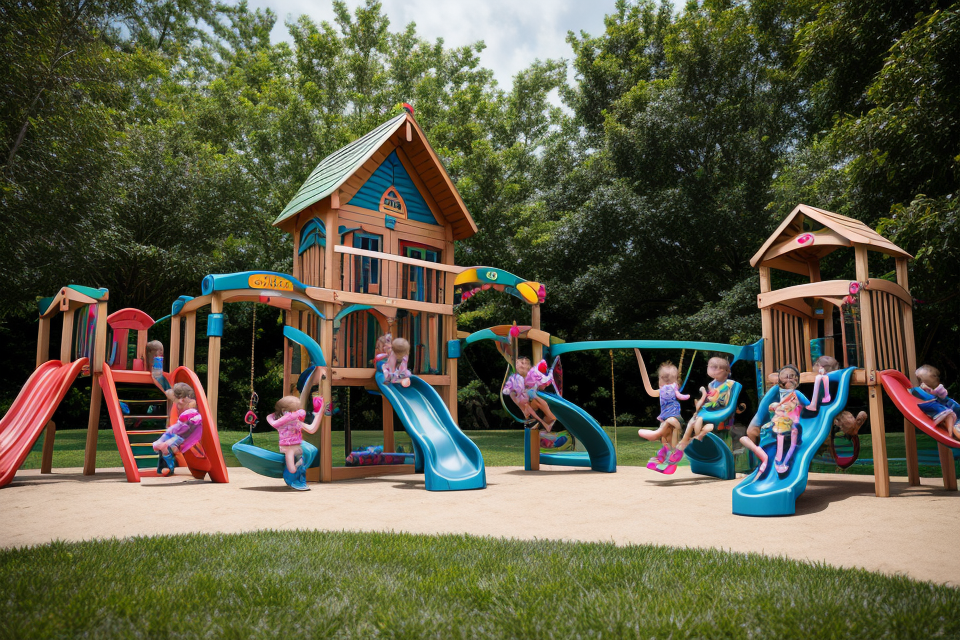
Get ready to explore the exciting world of interactive play! Interactive play is a type of play that involves active engagement and interaction between the child and their environment, as well as with other people. It is a crucial aspect of a child’s development and offers numerous benefits. In this article, we will delve into the world of interactive play and discover why it is so important for kids. From improving social skills to enhancing creativity, interactive play has it all! So, buckle up and get ready to discover the magic of interactive play!
Interactive play refers to a type of play that involves active engagement and interaction between the child and their environment, as well as with other children or adults. It is important for kids because it helps them develop critical skills such as problem-solving, communication, and creativity. Through interactive play, children learn to express themselves, collaborate with others, and think critically about their surroundings. It also promotes physical development, social and emotional growth, and cognitive development. Additionally, interactive play is important for building self-esteem and fostering a sense of independence in children.
Understanding Interactive Play
Defining Interactive Play
Interactive play refers to a type of play that involves the active participation of the child in an engaging and meaningful way. This type of play encourages children to actively explore and manipulate their environment, fostering their creativity, problem-solving skills, and social interactions.
Here are some key characteristics of interactive play:
- Active participation: Children are actively engaged in the play process, manipulating toys, objects, and their surroundings.
- Creativity: Interactive play encourages children to think creatively and use their imagination, allowing them to explore new ideas and possibilities.
- Problem-solving: Through interactive play, children learn to solve problems, think critically, and find creative solutions to challenges.
- Social interaction: Interactive play often involves other children or adults, promoting social interaction, communication, and cooperation.
Examples of interactive play include building with blocks, playing with dolls or action figures, engaging in imaginative play, and playing with puzzles or games.
Overall, interactive play is essential for children’s development, providing opportunities for them to learn, grow, and have fun.
Benefits of Interactive Play
Interactive play refers to any type of play that involves communication, collaboration, and interaction between children. This type of play is essential for children’s development as it provides a range of benefits that contribute to their physical, cognitive, and social and emotional growth.
Physical Development
Interactive play encourages children to engage in physical activities, such as running, jumping, and climbing, which helps develop their gross motor skills and coordination. It also helps children build strength, endurance, and flexibility, which are essential for their overall physical health.
Cognitive Development
Interactive play promotes cognitive development by stimulating children’s creativity, imagination, and problem-solving skills. It encourages children to think critically, reason logically, and solve problems, which are essential skills for academic success.
Social and Emotional Development
Interactive play helps children develop social and emotional skills by promoting cooperation, empathy, and communication. It teaches children how to share, take turns, and negotiate, which are essential skills for building positive relationships with others. Additionally, interactive play helps children develop self-esteem, self-confidence, and self-regulation, which are essential for emotional well-being.
In summary, interactive play is an essential component of children’s development, as it provides a range of benefits that contribute to their physical, cognitive, and social and emotional growth. By engaging in interactive play, children develop the skills and abilities necessary to succeed academically, build positive relationships with others, and maintain good emotional health.
Interactive Playsets for Kids
Types of Interactive Playsets
Indoor Playsets
Indoor playsets are designed to provide children with engaging and interactive play experiences within the confines of their homes. These playsets are particularly beneficial for young children who spend the majority of their time indoors. Some examples of indoor playsets include:
- Puzzles: Puzzles are an excellent way to stimulate children’s cognitive development. They encourage problem-solving skills, hand-eye coordination, and fine motor skills.
- Building sets: Building sets, such as Lego or K’NEX, allow children to create and build their own structures, encouraging creativity and imagination.
- Dress-up clothes and accessories: Dress-up clothes and accessories provide children with the opportunity to explore different roles and identities, promoting creativity and self-expression.
Outdoor Playsets
Outdoor playsets are designed to provide children with interactive play experiences in the great outdoors. These playsets are particularly beneficial for children who enjoy spending time outdoors and engaging in physical activity. Some examples of outdoor playsets include:
- Swings: Swings provide children with a fun and engaging way to exercise and develop their gross motor skills.
- Slides: Slides are a popular playground fixture that children love, providing a fun and exciting way to develop their gross motor skills and coordination.
- Climbing structures: Climbing structures, such as jungle gyms or monkey bars, provide children with a challenging and engaging way to develop their gross motor skills and coordination.
Educational Playsets
Educational playsets are designed to provide children with interactive play experiences that promote learning and development. These playsets are particularly beneficial for children who are at an age where they are beginning to learn and explore new concepts. Some examples of educational playsets include:
- Science kits: Science kits, such as chemistry sets or microscope kits, provide children with the opportunity to conduct scientific experiments and learn about the world around them.
- Building sets: Building sets, such as wooden blocks or magnet tiles, provide children with the opportunity to build and create their own structures, promoting creativity and imagination.
- Puzzles: Puzzles, such as jigsaw puzzles or crossword puzzles, provide children with the opportunity to develop their cognitive skills and problem-solving abilities.
Choosing the Right Interactive Playset for Your Child
Choosing the right interactive playset for your child is an important decision as it can greatly impact their physical, cognitive, and social development. Here are some considerations to keep in mind when selecting an interactive playset for your child:
- Age and Developmental Stage: The age and developmental stage of your child is a crucial factor to consider when choosing an interactive playset. Playsets that are designed for younger children will have different features and requirements than those designed for older children. It’s important to choose a playset that is appropriate for your child’s age and abilities to ensure they can use it safely and effectively.
- Interests and Abilities: Consider your child’s interests and abilities when choosing an interactive playset. If your child is interested in sports, a sports-themed playset may be a good choice. If your child has sensory integration issues, a playset with different textures and sensory components may be more appropriate.
- Safety: Safety should always be a top priority when choosing an interactive playset. Look for playsets that are designed with safety in mind, such as those with non-toxic materials, smooth edges, and proper weight limits. It’s also important to ensure that the playset is stable and won’t tip over easily.
- Space and Environment: Consider the space and environment where the playset will be used. Measure the space where the playset will be placed to ensure it will fit properly. Also, consider the climate and weather conditions in your area and choose a playset that is suitable for outdoor or indoor use.
- Cost: Cost is always a consideration when making a purchase. Set a budget and look for playsets that offer the best value for your money. Keep in mind that while it’s important to find a playset that fits your budget, it’s also important to prioritize safety and quality over cost.
By considering these factors, you can choose the right interactive playset for your child and provide them with hours of fun and learning.
Popular Interactive Playsets for Kids
When it comes to interactive playsets for kids, there are many options available on the market. Here are some of the most popular ones:
List of Top Interactive Playsets
- Lego Creator Expert Roller Coaster
- Little Tikes Wave Pool Playset
- Mega Bloks First Builders Bag
- Step2 Delivery Truck and Warehouse Playset
- Playmobil Funpark Adventure Playset
Descriptions and Features of Each Playset
- Lego Creator Expert Roller Coaster: This Lego playset is perfect for kids who love theme parks and roller coasters. It features a working roller coaster with 1,426 pieces to build, and it includes a train and a cotton candy machine. The set is suitable for kids aged 9 to 16 years old.
- Little Tikes Wave Pool Playset: This playset is perfect for kids who love water play. It features a pool with a wave slide, a climbing wall, and a sandy beach area. The set is suitable for kids aged 2 to 5 years old.
- Mega Bloks First Builders Bag: This playset is perfect for babies and toddlers who are just starting to build and play. It includes 40 large, soft blocks in different shapes and colors, and it comes in a reusable bag for easy storage. The set is suitable for kids aged 1 to 3 years old.
- Step2 Delivery Truck and Warehouse Playset: This playset is perfect for kids who love playing with trucks and delivery vehicles. It features a warehouse with a loading dock, a lift, and a ramp, and it includes a delivery truck and several crates. The set is suitable for kids aged 2 to 5 years old.
- Playmobil Funpark Adventure Playset: This playset is perfect for kids who love theme parks and fairs. It features a fun park with a ferris wheel, a roller coaster, a bumper car ride, and a cotton candy machine. The set includes 4 figures and 480 pieces in total. The set is suitable for kids aged 4 to 10 years old.
Encouraging Interactive Play at Home
Creating an Environment for Interactive Play
Creating an environment that supports interactive play is essential for fostering creativity, problem-solving skills, and social interaction in children. Here are some tips for setting up a space for interactive play:
Tips for Setting Up a Space for Interactive Play
- Provide a designated play area: Set aside a specific area in your home where your child can engage in interactive play. This could be a corner of a room or a dedicated playroom.
- Use versatile furniture: Choose furniture that can be moved or rearranged easily to accommodate different types of play. For example, a card table can be used for building blocks one day and a art studio the next.
- Incorporate storage solutions: Use baskets, shelves, and other storage solutions to keep toys and materials organized and easily accessible.
- Include natural elements: Incorporate natural elements such as plants, rocks, and sticks to encourage imaginative play and exploration.
Importance of Providing Variety in Play
Providing a variety of toys and materials for interactive play encourages children to explore and discover new things. It also helps to prevent boredom and promotes creativity and imagination.
- Rotate toys and materials: Regularly rotating toys and materials in the play area keeps things fresh and exciting for children.
- Incorporate different types of play: Encourage a mix of pretend play, building and construction, and sensory play to provide a well-rounded play experience.
- Include open-ended toys: Open-ended toys, such as blocks, cars, and dolls, allow children to use their imagination and creativity to engage in interactive play.
By creating an environment that supports interactive play, parents can encourage their children to develop important skills such as problem-solving, creativity, and social interaction.
Ideas for Promoting Interactive Play at Home
Interactive play is an essential aspect of a child’s development, as it fosters creativity, imagination, and social skills. To encourage interactive play at home, parents can implement simple and fun ideas that promote learning and development.
Simple and Fun Interactive Play Ideas
- Storytelling: Encourage your child to create their own stories by providing them with picture prompts or props. This helps develop their creativity and language skills.
- Puzzles: Introduce age-appropriate puzzles to improve problem-solving and cognitive skills.
- Dress-up: Provide your child with dress-up clothes and accessories to encourage role-playing, which helps develop social skills and imagination.
- Play-dough: Create your own play-dough recipe and encourage your child to use it to create different shapes and objects, improving their fine motor skills.
- Shadow puppets: Create shadow puppets with your child and use them to tell stories or act out scenes, fostering creativity and imagination.
Tips for Incorporating Learning into Playtime
- Use everyday objects: Turn household items into learning tools by asking your child to identify shapes, colors, and textures.
- Ask open-ended questions: Encourage your child to think critically by asking open-ended questions during playtime, such as “What do you think will happen if you do this?” or “How do you think that works?”
- Play with themes: Choose a theme for playtime, such as animals or space, and encourage your child to explore and learn about that topic through play.
- Introduce new vocabulary: Expand your child’s vocabulary by introducing new words during playtime and encouraging them to use these words in their play.
- Emphasize teamwork: Encourage cooperation and teamwork by playing games that require coordination and communication, such as Simon Says or Red Light, Green Light.
Recap of the Importance of Interactive Play
- Interactive play is essential for a child’s development as it helps them learn how to communicate, collaborate, and problem-solve.
- It allows children to express themselves, develop creativity, and enhance their emotional intelligence.
- Engaging in interactive play also helps kids build social skills, increase self-esteem, and develop a sense of empathy.
- Furthermore, interactive play provides a safe space for children to explore and learn about the world around them, promoting cognitive development and fostering a love for learning.
- Lastly, interactive play helps children regulate their emotions, reducing stress and anxiety, and promoting overall well-being.
Overall, interactive play is crucial for a child’s growth and development, and encouraging it at home can have a significant impact on their overall well-being.
FAQs
1. What is interactive play?
Interactive play refers to a type of play that involves the child actively engaging with their environment, toys, and other children. This type of play is characterized by the child’s ability to explore, manipulate, and experiment with their surroundings, which helps them to develop important skills such as problem-solving, creativity, and social interaction.
2. Why is interactive play important for kids?
Interactive play is important for kids because it helps them to develop crucial skills that are necessary for their growth and development. Through interactive play, children learn how to problem-solve, think creatively, and communicate with others. Additionally, interactive play helps children to develop important social skills, such as sharing, taking turns, and cooperating with others.
3. What are some examples of interactive play?
Some examples of interactive play include building with blocks, playing with dolls, and engaging in imaginative play. These types of play encourage children to use their imagination, explore different scenarios, and interact with others in a social setting. Other examples of interactive play include playing with cars, trucks, and other vehicles, as well as engaging in outdoor activities such as hiking, biking, and playing sports.
4. How can parents encourage interactive play in their children?
Parents can encourage interactive play in their children by providing them with a variety of toys and materials that encourage exploration and experimentation. This might include building blocks, playdough, art supplies, and other items that allow children to use their imagination and creativity. Additionally, parents can encourage interactive play by setting up playdates with other children, taking their children to parks and playgrounds, and engaging in activities that promote social interaction and collaboration.


